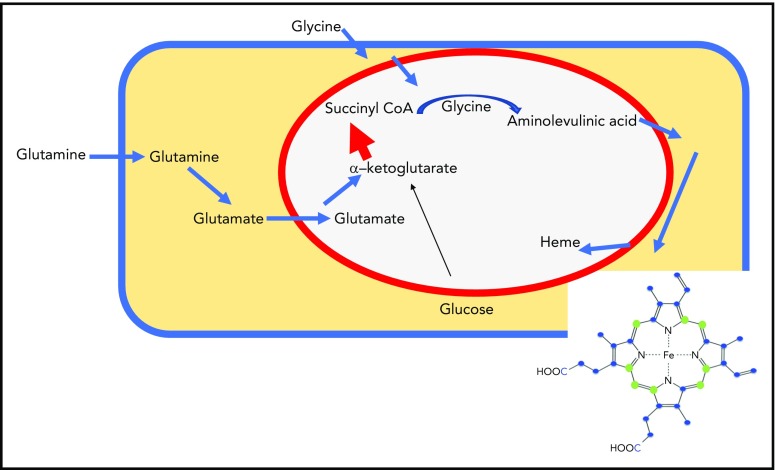Erythroid cells use carbon atoms derived from glutamine metabolism as heme building blocks. Glutamine enters from the bloodstream through a known transporter, is converted to glutamate by glutaminase, enters the mitochondrial matrix, and is converted to α-ketoglutarate by glutamate dehydrogenase. Increased amounts of α-ketoglutarate dehydrogenase generate large amounts of succinyl-CoA, which condenses with glycine to form ALA, the first building block of heme. ALA is transported into the cytosol, where multiple heme biosynthetic enzymes generate heme intermediates. Ultimately, heme precursors re-enter the mitochondrial matrix, where iron is added to the porphyrin ring. Although glucose gives rise to α-ketoglutarate in the citric acid cycle, most of the carbons in heme in experiments by Burch et al were derived from labeled glutamine rather than glucose (blue spheres represent carbon derived from heme). A large increase in α-ketoglutarate dehydrogenase may enable the citric acid cycle in the mitochondrial matrix (within the red circle) to maintain full function, even though significant amounts of succinyl-CoA are diverted into heme synthesis in developing erythroid cells.

An official website of the United States government
Here's how you know
Official websites use .gov
A
.gov website belongs to an official
government organization in the United States.
Secure .gov websites use HTTPS
A lock (
) or https:// means you've safely
connected to the .gov website. Share sensitive
information only on official, secure websites.
